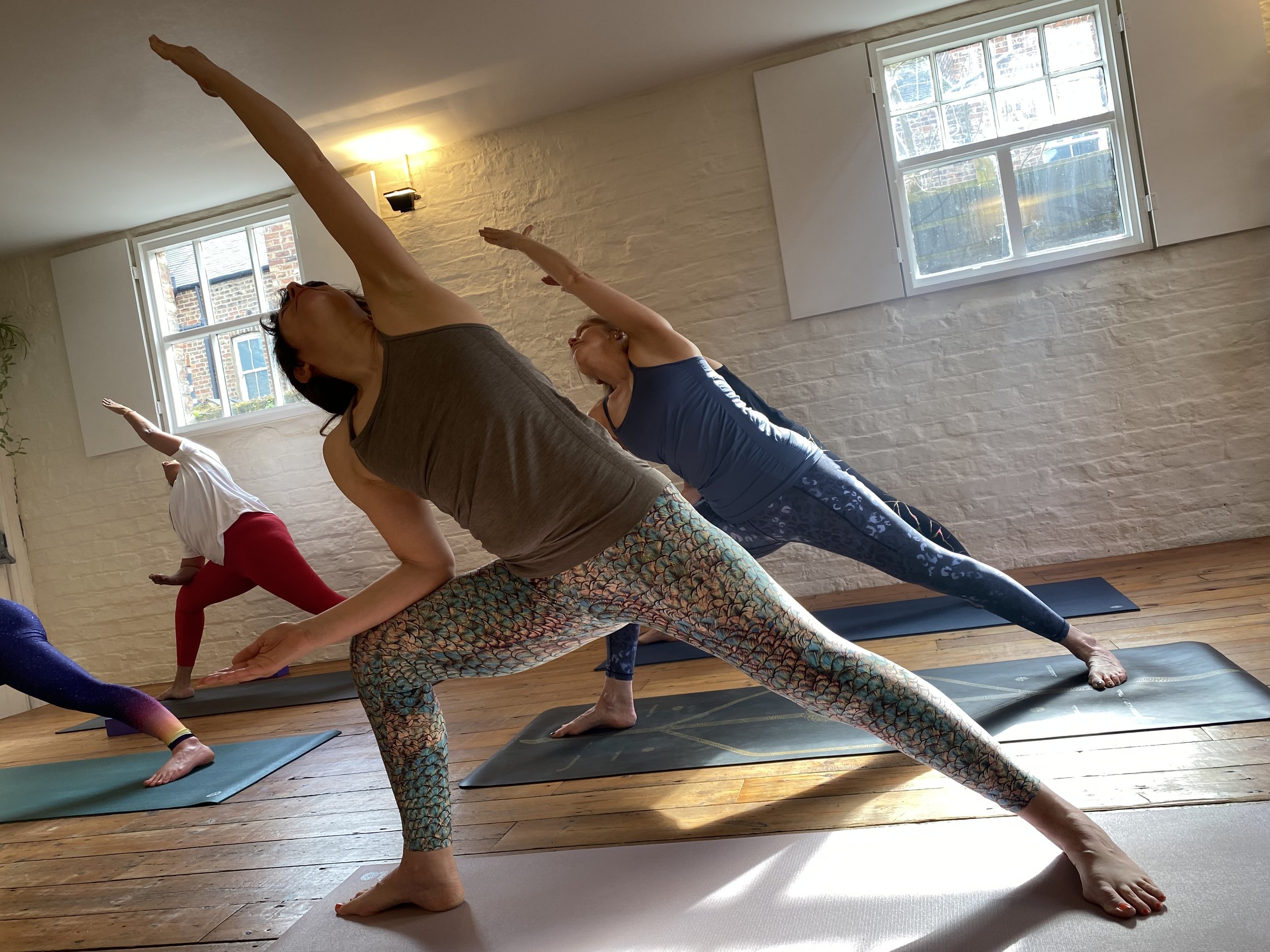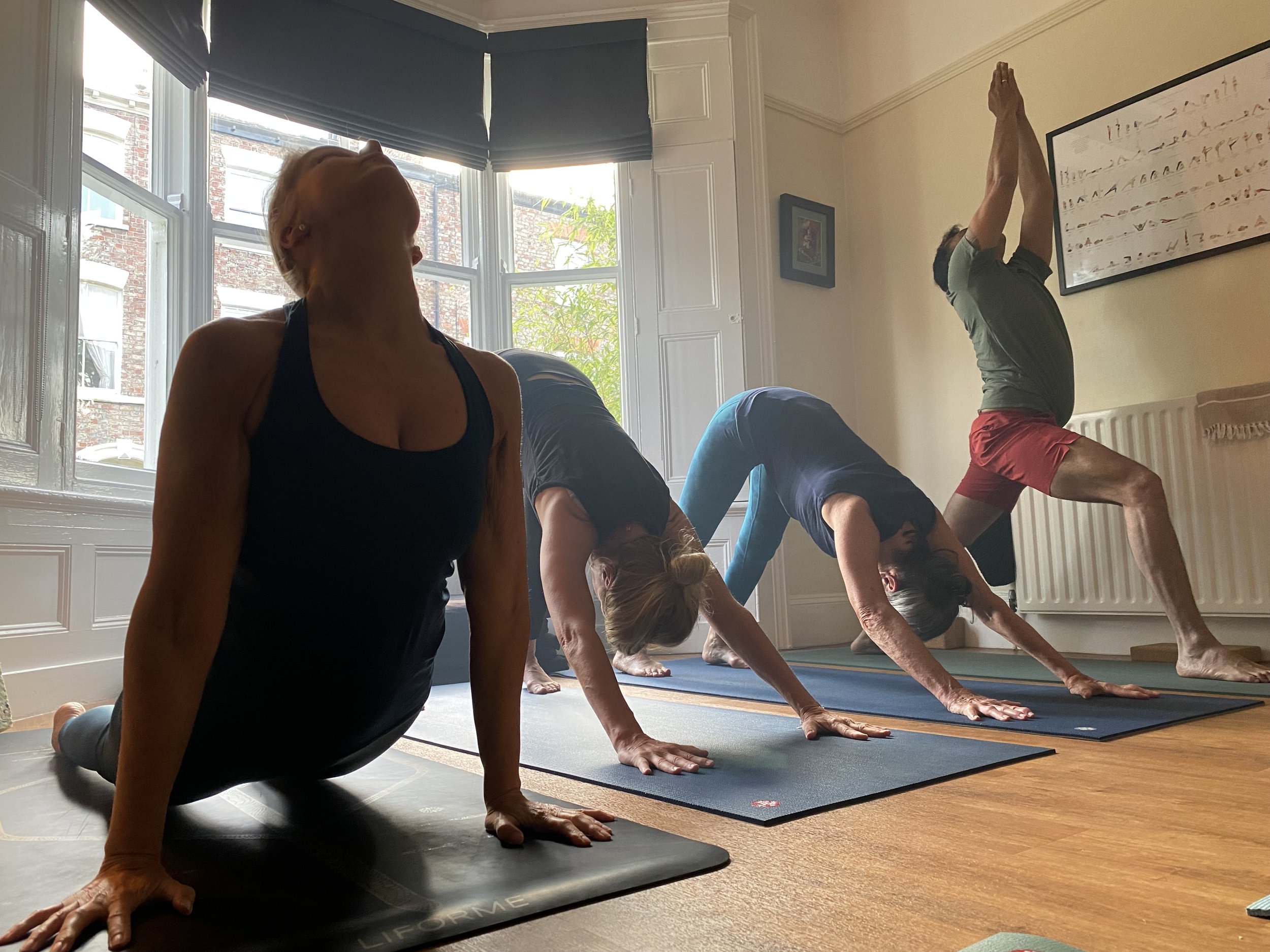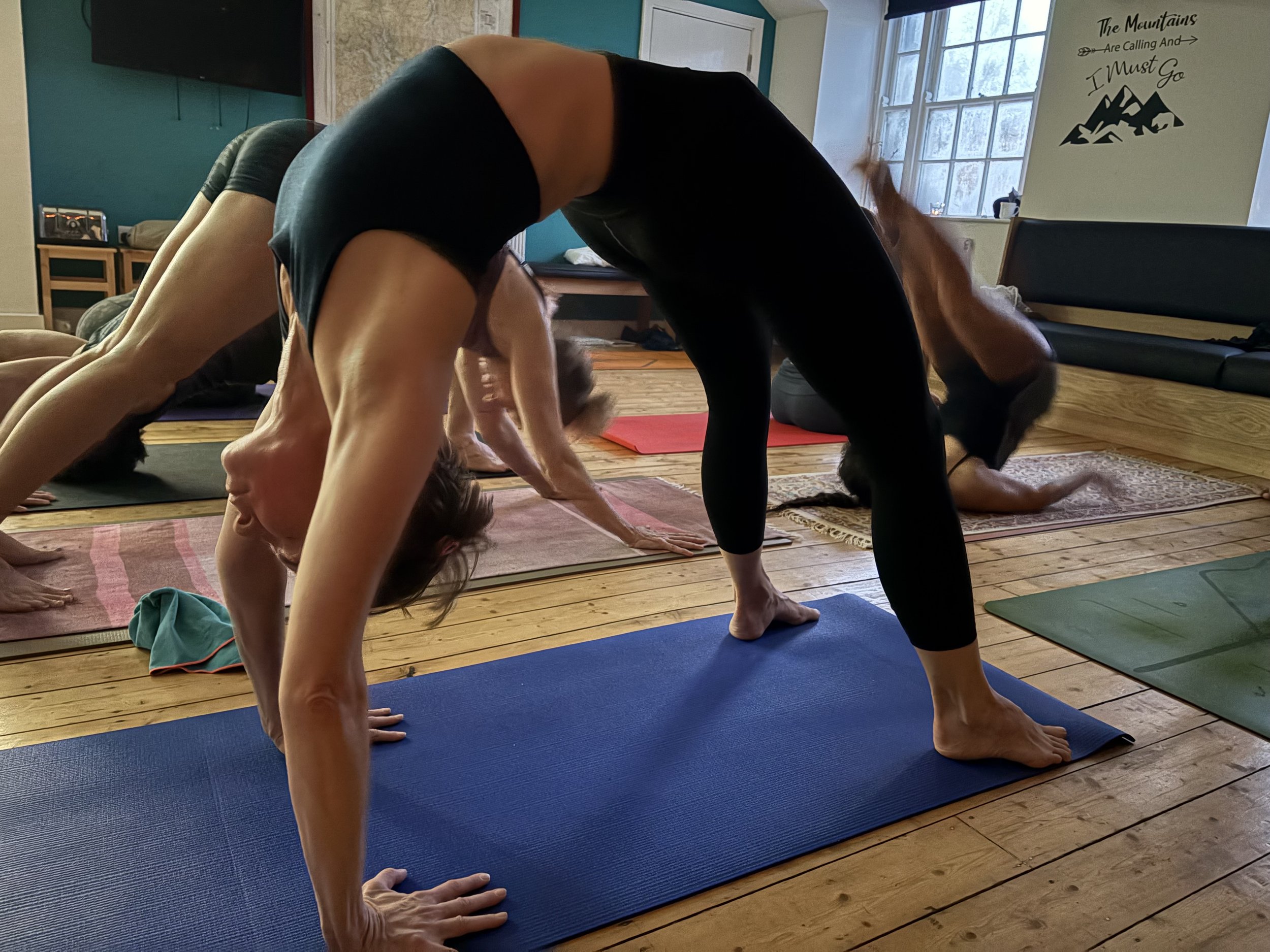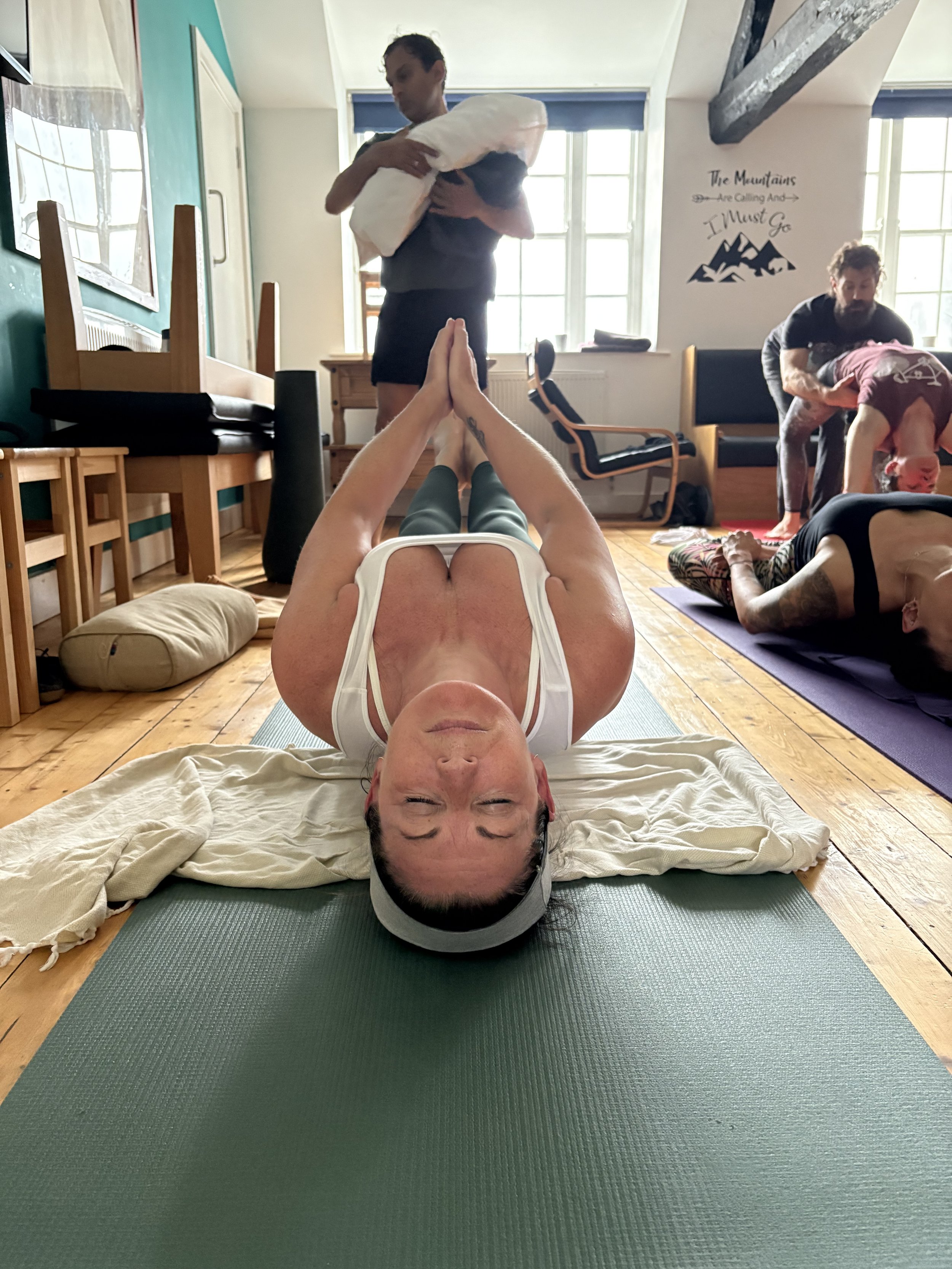
Breath, movement, discipline, flow.
How we practice
Mysore Style Practice
Mysore-style practice is a traditional approach to learning Ashtanga yoga, characterised by self-paced, guided practice within a group setting. Named after the city of Mysore in India, where it originated under the guidance of Sri K. Pattabhi Jois, this style allows practitioners to memorise sequences and move through them at their own pace, with individualised adjustments from the teacher. Unlike led classes, where everyone moves in unison, Mysore practice offers a unique combination of independence and support. Practitioners can work on poses at their own level and intensity, fostering a deeper connection to the breath and body.
In Mysore-style practice, students often begin with the foundational sequences, gradually progressing through postures as they build strength, flexibility, and awareness. Each practitioner receives personal attention and guidance, tailored to their individual needs and experience level. This structure encourages gradual improvement and self-discipline, while maintaining the focus and meditative quality central to Ashtanga yoga. It’s an ideal approach for cultivating a sustainable, lifelong practice, as students can adjust the pace and difficulty according to their changing needs and abilities over time. Mysore-style classes are open to all levels, creating an inclusive environment where students can develop at their own rhythm under the watchful eye of an experienced teacher.
Sanskrit Counted led Classes
Ashtanga Sanskrit counted classes are traditional classes that follow the Ashtanga Yoga method, using Sanskrit count to lead students through a set sequence of postures. In these classes, the teacher recites the Sanskrit vinyasa count, a numerical and verbal guide that links breath with movement, rather than offering detailed alignment cues or modifications. This structured approach helps practitioners develop a rhythmic flow, maintain focus, and internalize the specific number of breaths and movements within the Ashtanga sequence. The pace of a counted class is usually consistent, so it can feel challenging, especially for beginners or those not accustomed to the method, but it can also deepen one’s practice by building mental focus, discipline, and physical endurance.
The use of Sanskrit in counted classes provides a connection to the roots of Ashtanga Yoga, honoring its cultural and spiritual heritage. Hearing and repeating the vinyasa count allows students to become familiar with traditional terms, fostering a more immersive experience that aligns them with Ashtanga’s lineage. Counted classes are often reserved for more experienced students or those familiar with the sequence, as they require a solid foundation and knowledge of the practice. By regularly attending these classes, students refine their understanding of the Ashtanga series, improve their breath control, and deepen their connection to the method, creating a powerful moving meditation that cultivates both mental clarity and physical strength.
Iyengar Inspired Alignment Classes
An Iyengar-inspired alignment class focuses on precision, balance, and the meticulous engagement of the body in each yoga pose. Rooted in the teachings of B.K.S. Iyengar, this style emphasises the use of props—such as blocks, straps, bolsters, and blankets—to help practitioners achieve proper alignment, regardless of their level of flexibility or strength. The class typically progresses slowly and methodically, allowing students to explore the nuances of each pose, refine their postural awareness, and develop a strong foundation. Teachers often provide detailed verbal instructions, guiding participants to create symmetry and stability while maintaining mindfulness in their practice.
These classes are ideal for those seeking a deeper understanding of how their bodies work in yoga poses and for individuals recovering from injuries who need to modify their practice safely. The structured approach encourages discipline and cultivates strength, endurance, and flexibility while minimising the risk of strain or injury. Students leave the class not only with a sense of physical alignment but also with a heightened awareness of how alignment in the body can translate to a greater sense of balance and harmony in their everyday lives.
Dhyana (Meditation) & Pranayama (Breathwork)
Dhyana, or meditation, is a state of deep mental focus and stillness achieved by quieting the mind and centering one’s awareness. Rooted in ancient spiritual practices, it is a cornerstone of yoga and mindfulness traditions. Meditation involves directing attention inward, often focusing on a specific object, thought, or mantra, allowing the practitioner to transcend ordinary mental activity. Over time, dhyana fosters a sense of inner peace, clarity, and heightened self-awareness. It is also associated with numerous benefits, including stress reduction, improved concentration, and emotional stability, making it a powerful tool for personal growth and spiritual connection.
Pranayama, often referred to as breathwork, is the practice of consciously regulating the breath to harmonise the body and mind. Derived from the Sanskrit words prana (life force) and ayama (control), pranayama serves as a bridge between the physical and spiritual realms in yoga. Techniques range from deep, slow breathing to rhythmic or alternate nostril breathing, each designed to energize, calm, or balance the practitioner. Breathwork not only enhances lung capacity and oxygenation but also reduces stress, promotes relaxation, and supports emotional resilience. As a meditative practice, it deepens self-awareness and prepares the mind for higher states of consciousness.
“In the beginner’s mind there are many possibilities, but in the expert’s mind there are few.”
Free Trial Class.
Experience a free trial Ashtanga Mysore class by filling out the form below. Our knowledge based guidance, ensures a supportive and personalised approach, helping you build a strong, sustainable practice. This trial offers the perfect opportunity to explore the benefits of Mysore-style yoga in a welcoming environment, encouraging you to continue your journey with us. Let us know your preferred days and times for a class, and we’ll arrange your booking.






“It’s only through form that we can realise emptiness”




